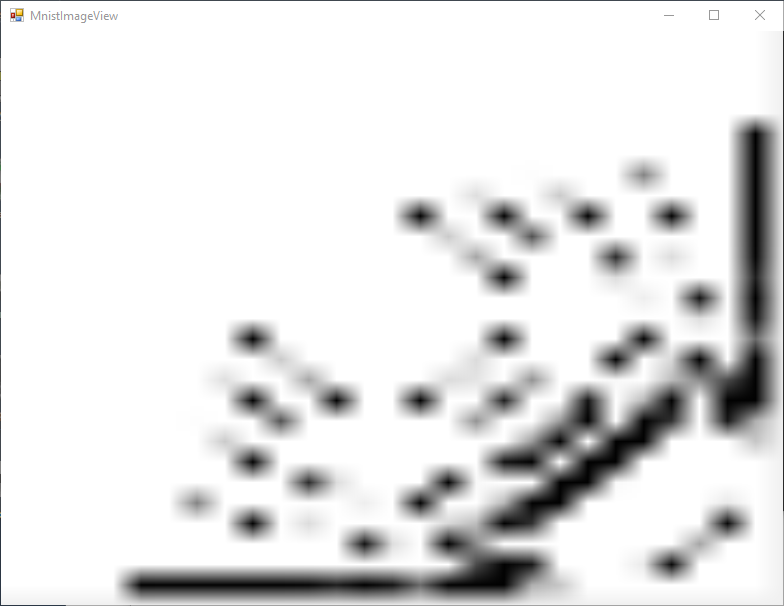I am currently exploring neural networks and machine learning and I implemented a basic neural network in c#. Now I wanted to test my back propagation training algorithm with the MNIST database. Although I am having serious trouble reading the files correctly.
Spoiler the code is currently very badly optimised for performance. My aim currently is to grasp the subject and get a structured view how things work before I start throwing out my data structures for faster ones.
To train the network I want to feed it a custom TrainingSet data structure:
[Serializable]
public class TrainingSet
{
public Dictionary<List<double>, List<double>> data = new Dictionary<List<double>, List<double>>();
}
Keys will be my input data (784 pixels per entry(image) which will represent the greyscale values in range from 0 to 1). Values will be my output data (10 entries representing the digits from 0-9 with all entries on 0 except the exspected one at 1)
Now I want to read the MNIST database according to this contract. I am currentl on my 2nd try which is inspired by this blogpost: https://jamesmccaffrey.wordpress.com/2013/11/23/reading-the-mnist-data-set-with-c/ . Sadly it is still producing the same nonsense as my first try scattering the pixels in a strange pattern:

My current reading algorithm:
public static TrainingSet GenerateTrainingSet(FileInfo imagesFile, FileInfo labelsFile)
{
MnistImageView imageView = new MnistImageView();
imageView.Show();
TrainingSet trainingSet = new TrainingSet();
List<List<double>> labels = new List<List<double>>();
List<List<double>> images = new List<List<double>>();
using (BinaryReader brLabels = new BinaryReader(new FileStream(labelsFile.FullName, FileMode.Open)))
{
using (BinaryReader brImages = new BinaryReader(new FileStream(imagesFile.FullName, FileMode.Open)))
{
int magic1 = brImages.ReadBigInt32(); //Reading as BigEndian
int numImages = brImages.ReadBigInt32();
int numRows = brImages.ReadBigInt32();
int numCols = brImages.ReadBigInt32();
int magic2 = brLabels.ReadBigInt32();
int numLabels = brLabels.ReadBigInt32();
byte[] pixels = new byte[numRows * numCols];
// each image
for (int imageCounter = 0; imageCounter < numImages; imageCounter++)
{
List<double> imageInput = new List<double>();
List<double> exspectedOutput = new List<double>();
for (int i = 0; i < 10; i++) //generate empty exspected output
exspectedOutput.Add(0);
//read image
for (int p = 0; p < pixels.Length; p++)
{
byte b = brImages.ReadByte();
pixels[p] = b;
imageInput.Add(b / 255.0f); //scale in 0 to 1 range
}
//read label
byte lbl = brLabels.ReadByte();
exspectedOutput[lbl] = 1; //modify exspected output
labels.Add(exspectedOutput);
images.Add(imageInput);
//Debug view showing parsed image.......................
Bitmap image = new Bitmap(numCols, numRows);
for (int y = 0; y < numRows; y++)
{
for (int x = 0; x < numCols; x++)
{
image.SetPixel(x, y, Color.FromArgb(255 - pixels[x * y], 255 - pixels[x * y], 255 - pixels[x * y])); //invert colors to have 0,0,0 be white as specified by mnist
}
}
imageView.SetImage(image);
imageView.Refresh();
//.......................................................
}
brImages.Close();
brLabels.Close();
}
}
for (int i = 0; i < images.Count; i++)
{
trainingSet.data.Add(images[i], labels[i]);
}
return trainingSet;
}
All images produce a pattern as shown above. It's never the exact same pattern but always seems to have the pixels "pulled" down to the right corner.

pixels[x * y]should probably bepixels[(y * numCols) + x]– Chadwell